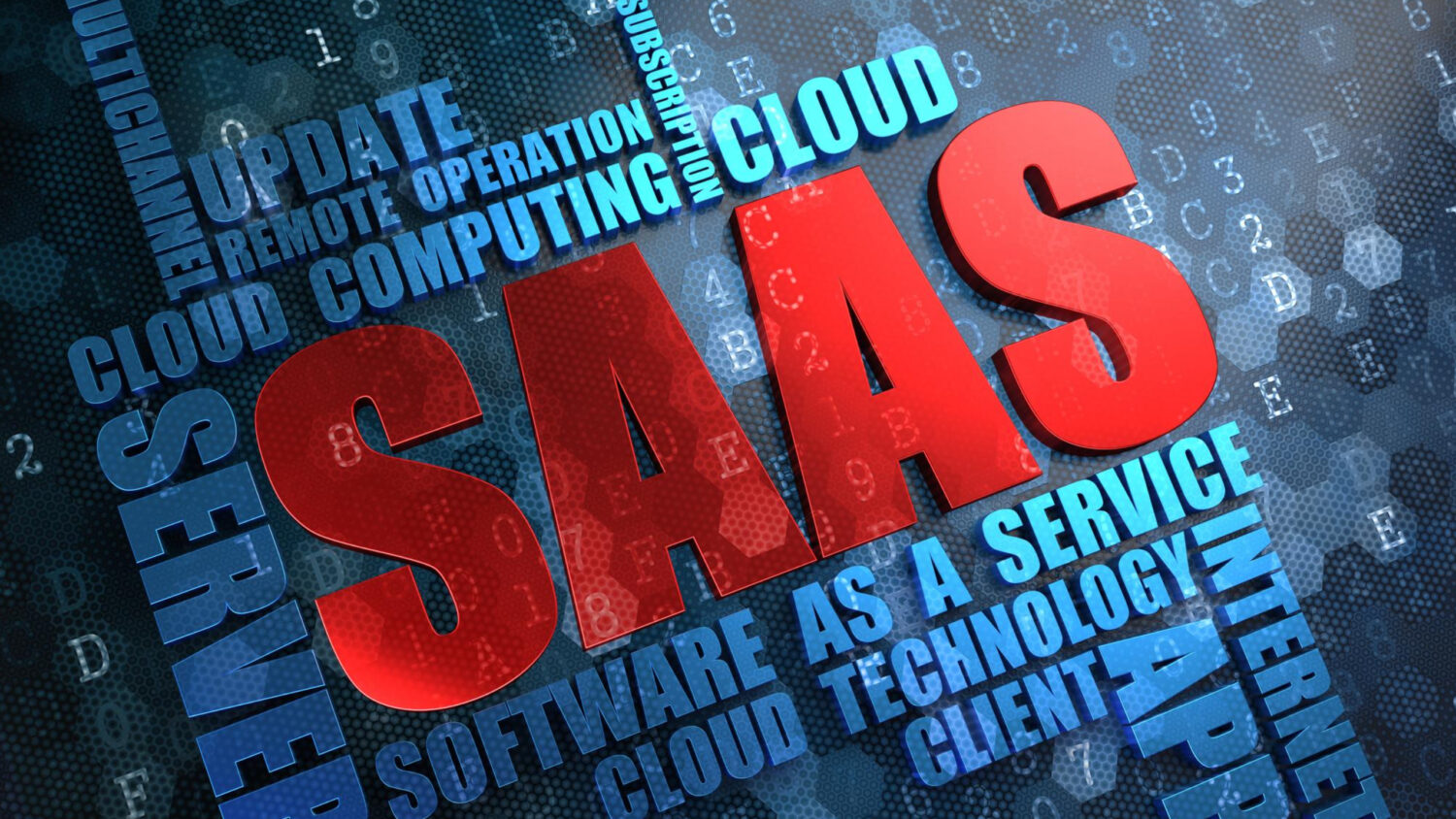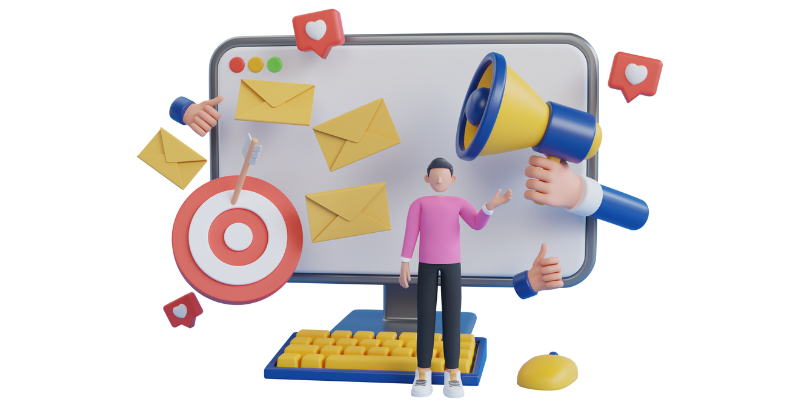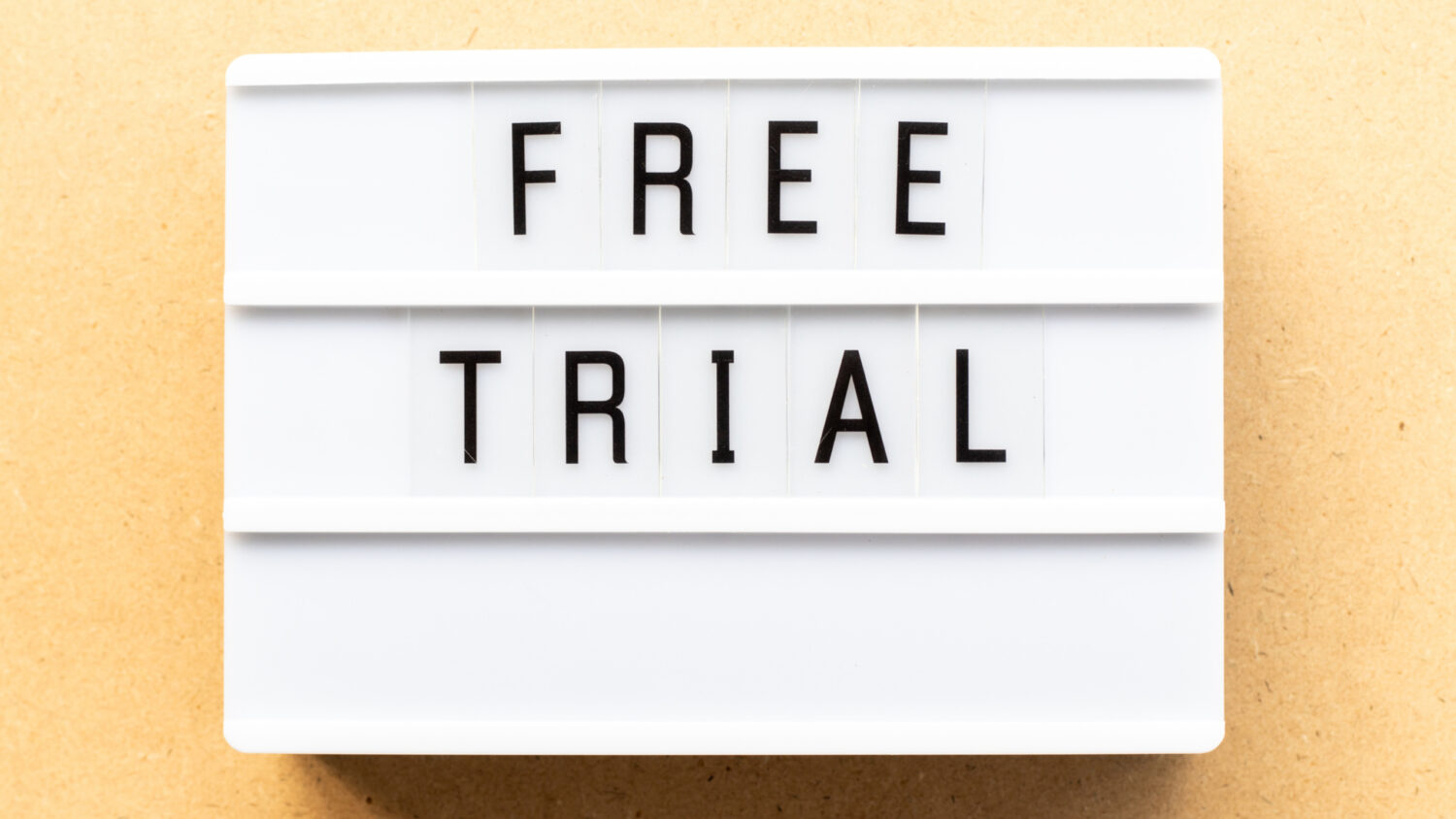Software as a service or SaaS marketing enables you to take your SaaS products to businesses and end-users more efficiently than your competitors. Sound interesting? Keep reading!
For the new cloud-based computing market, SaaS products are the principal intangible goods that businesses sell. According to the latest research on the SaaS market done by Ascendix Tech, there are 30,000 SaaS companies worldwide, of which 17,000 are in the USA. Also, the same report suggests that the SaaS market revenue shall grow to $700 billion by 2030 from approximately $284 billion in 2022.
SaaS marketing drives sales in this vast ecosystem of digital goods. Let us dive in to learn all you need to know to excel in your SaaS marketing strategy.
What is SaaS Marketing?

This marketing concept enables you to carry out a set of activities, tactics, and strategies to increase your product’s outreach. You do these to offer and sell subscription-based software, web apps, cloud-based tools, etc., to customers. You could call this a full-proof technique to market your SaaS product by making it relevant for the audience.
Since SaaS products are intangible, it is hard to sell such offerings. Furthermore, there is a service added to this digital tool or software you want to sell. The service is also intangible. Because users will need to use the tool or web app to produce the data or content they need. What you are doing is ensuring that the software works smoothly. So, you need unique marketing tools and techniques to go to the customer and sell it. A SaaS marketing strategy is what you need.
Metrics of SaaS Marketing
- Unique Visitors: This is to calculate the number of unique internet users who visit your website on a monthly basis.
- LVR (Lead-to-Customer Ratio): How many leads must you engage with to get one customer? LVR will tell that.
- NPS (Net Promoter Score): The metric helps you understand how satisfied your customers are with your SaaS product.
- CAC (Customer Acquisition Cost): How much do you need to spend to get one paid customer? CAC will tell you that.
- Churn Rate: This metric calculates the percentage of customers who cancel or do not renew their subscriptions after the first or subsequent months.
- CLV (Customer Lifetime Value): This is to gauge the average revenue generated by each customer throughout their business with your company.
- MRR (Monthly Recurring Revenue): This metric assesses the monthly revenue you generate from customer subscriptions.
- Revenue Churn: This metric informs you about the percentage of subscription revenue lost within a given timeframe.
- ARR (Annual Recurring Revenue): This is just an annual calculation of MRR.
- Customer Churn Rate: The metric helps you evaluate the rate at which customers discontinue or do not renew their monthly subscriptions.
SaaS Marketing Terms that SMEs Use
You must know some industry terms of this concept to become an insider. Also, if you are a SaaS owner and negotiating with a marketing agency for SaaS marketing, the agency people will speak some insider language that you may not know. So, find out the terminologies below to become an expert in the niche:
#1. The Ratio of CLV and CAC
The CLV:CAC tells you how efficient and profitable your SaaS marketing campaign is. For example, if CAC for a SaaS tool is $50 and the CLV of the same tool is $200, then the CLV:CAC ratio is 4. So, it is highly profitable.
#2. Customer Onboarding
Customer onboarding is the process of guiding users who have signed up for a free trial to use your service actively for real-world use cases. Increased usage of your service during the trial period increases the possibility of conversion to a paid customer.
Moreover, when paid customers heavily depend on your SaaS product, it significantly enhances the probability of them remaining subscribers in the longer run.
#3. SaaS B2C Marketing
This is the concept of targeting end-users for your SaaS offerings. For example, online note-taking apps, journaling apps, on-demand video streaming (Netflix and Amazon Prime Video), spreadsheet apps, etc., require B2C SaaS marketing.
#4. SaaS B2B Marketing

You will use this marketing concept when your target audience is businesses, startups, non-profits, governments, etc. SaaS unicorns and enterprises like Stripe, Wise, Jira, Fresh Sales, Zoho Desk, Microsoft 365, Google Workspace, etc., use B2B SaaS marketing to promote their products.
SaaS Marketing Channels
Like any other marketing tactic, marketing for SaaS products require unique channels to deliver its message. Find below some efficient channels you should be using:
#1. Email Marketing
This is the most affordable channel to market your SaaS products. You could create a collection of emails of leads and sign them up for frequent newsletters from your company. Email newsletters help you drive the leads to the landing pages of your SaaS products and shopping carts.
#2. Search Engine Optimization
Using SEO, you can research the keywords your target audience is likely to search on Google Search, Bing, Yahoo, etc. Then, create articles, how-tos, press releases, case studies, etc., and publish them on your blog.
You could also post promotional articles about your SaaS products on other technology content publishing websites. The aim is to increase the activity around your SaaS tools on the internet, so Google or Bing frequently show the tool on top of the SERP.
#3. Influencer Marketing
To increase your SaaS product’s visibility on social media platforms like Instagram, Facebook, and YouTube, you can approach social media influencers. Find out authoritative influencers who promote technology products that you sell. Ask them to review your products online so their followers get influenced to sign up for a free trial or a purchase. Targeting micro-influencers is a budget-friendly way rather than celebrity influencers.
#4. Affiliate Marketing
SaaS marketing heavily relies on affiliate marketing. There are many reliable affiliate marketing tools that help you manage your affiliate programs.
#5. Referral Marketing
Let your existing customers earn app usage credit, in-app currencies, discounts on subscription renewals, or other rewards by running a referral marketing program for your SaaS tools.
Your SaaS tool should become viral if it is worthy via word-of-mouth marketing from existing users. Also, you could use some referral program software to manage the campaign smoothly.
#6. Co-Marketing
Some startup SaaS companies tie up with IT giants like Microsoft, Google, Apple, etc., for co-marketing. Here, you can benefit from the reputation and reach of the larger brand to promote your SaaS products and services.
#7. Online Ads

If you have a better budget to promote your SaaS offerings, you can also try online ad campaigns. You can promote your tools or services through Google Ads, Facebook Ads, Twitter Ads, etc.
Why Is SaaS Marketing Different?
In SaaS marketing, you sell an intangible product that users cannot physically pick up or examine. This requires you to create demos, how-tos, and other guides that clearly illustrate how your product works and why it matters.
The second aspect of SaaS is service. Not only do you sell an intangible product, but you also provide intangible services. The best SaaS companies facilitate high-quality customer experience teams to continually enhance customers’ interaction with their tools.
A significant percentage of SaaS companies operate on a subscription model. This means that every year (or according to your contract duration), your customers have the opportunity to churn. To prevent them from seeking other solutions, you must continually market your products and services to demonstrate the return on investment (ROI) you provide.
Why Are Free Trials Important in SaaS Marketing?
Free trials play a vital role in SaaS marketing. Users can interact with your SaaS product using their own data or business models to understand how effective your tool is. If it is useful, most clients will not hesitate to buy.
You have the option to offer either a time-limited full-featured free trial. Alternatively, you can roll out a freemium model where users can access a limited set of features, tempting them to upgrade.
For example, Gmail is free for all. But you can get a Google Workspace subscription for your business or brand and get premium Gmail. You can brand your Gmail according to your needs. Also, you get advanced control like admin access, custom emails, work emails, added storage, and enterprise-grade security.
Key Steps to Kick Start a SaaS Marketing Campaign

Find below the quick steps to launch marketing campaigns for your SaaS business:
- Specify your target audience and create buyer personas for them.
- Perform market research to gauge industry trends, competition, and customer needs.
- Create a value proposition that clearly communicates the benefits of your SaaS product.
- Set SMART goals to guide your marketing campaign.
- Draft a SaaS marketing strategy that includes channels, tactics, and messaging for the audience.
- Produce high-quality content, such as videos, infographics, interactive demos, blog posts, case studies, and so on, to engage and educate the audience.
- Optimize your website and landing pages for conversions using sales funnel tools.
- Create a lead generation strategy and reach out to those leads to pitch the value proposition of your SaaS product.
- Go to social media platforms and online communities to increase awareness around your SaaS products.
- Monitor and analyze the SaaS marketing metrics to evaluate the efficacy of the campaign.
- Collect feedback from stakeholders and continually improve the marketing strategy.
Evergreen SaaS Marketing Strategies
#1. Develop SaaS Products That Solves Problems
Your product must solve problems the target audience faces in their professional or personal life. For example, Jira efficiently handles IT services and requests management workflows. So, businesses will likely sign up for Jira over similar apps that do not solve the problem efficiently.
#2. Create a Customer Journey

The buyer’s journey outlines all the steps a lead performs when making a buy call. Include these stages:
- Awareness: The buyer becomes aware of a problem or need they have.
- Consideration: The lead conducts research to explore potential SaaS products to address their problem.
- Decision: The buyer evaluates the available options and selects a specific solution.
#3. Explain Features Clearly
Create a dedicated website page to explain the features of your SaaS tool in detail. When doing this, link the features with real-world issues the tool can solve. Then, include links to check out how it works within the app. Create templates of such real-world scenarios so users can experience the functioning of the software instantly. This will increase sign-ups.
#4. Create a Pricing Plan Page
Freelance, small, medium, and startup businesses have limited budgets for SaaS products. So, clearly outline the product pricing on a dedicated web page. Also, mention add-ons, upgrades, etc., in a table. This will encourage SMEs to sign up quickly. For enterprise businesses, it is better to create a custom quote CTA.
#5. Place CTAs on Landing Pages
You must place the call to action or CTA buttons strategically in various places on your website. These CTAs could be Read More, Watch Now, Learn More, Book Now, Buy Now, View More, Free Trial, Get Quote, etc. Ensure the links behind these CTAs work. CTAs are no good if the links are broken!
#6. Offer Free Trials

The best way to attract, engage, and retain your customers is to offer a free trial. Use several marketing channels to propagate the message that your SaaS app is available for free. Include the basic features for free so users get interested in using the app. However, keep advanced and most important features behind the paywall so users make the buy call after experiencing that the tool can really add value to their profession or business.
#7. Setup a Community
There should be a support or engagement community behind the SaaS product. Here, you can appoint product ambassadors whole will endorse your SaaS tools. Also, post troubleshooting and how-to articles when paid users, free trial users, and leads ask questions on the community page.
Conclusion
The SaaS marketing ecosystem is a complex place. However, this article explains the technicalities of this spectrum in easy language so you can understand the concept from the very basic to the advanced level. Also, the article will help you get started with your SaaS marketing strategy in no time.
Next up, learn the importance of a knowledge base for SaaS.
-
 EditorUsha, the editor-in-chief of Geekflare, is a tech-savvy and experienced marketer with a Master’s degree in Computer Applications. She has over a decade of experience in the tech industry, starting as a software engineer and then moving into digital marketing and team management.
EditorUsha, the editor-in-chief of Geekflare, is a tech-savvy and experienced marketer with a Master’s degree in Computer Applications. She has over a decade of experience in the tech industry, starting as a software engineer and then moving into digital marketing and team management.


